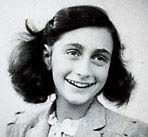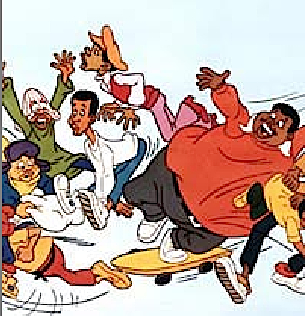For the past couple of days, I’ve been writing about the elevator speech, the ubiquitous 3-line pitch’s much prettier fraternal twin. Prettier how, you ask? Well, in the most important way a verbal pitch can be: it’s more likely to impress a hearer.
As I MAY have mentioned before in this series, the 3-line pitch is not native to the publishing world — it’s an import from the wilds of moviedom, where screenwriters, poor souls, are expected to be able to establish the premise of a movie within three beats: an out-of-work actor/cross-dresses in order to find work/and becomes a star as a woman.
My, that plot sounds familiar, doesn’t it?
Although the PRACTICE of verbal pitching has now entered the world of the writers’ conference, only the most literal of term-huggers could possibly believe that what agents and editors are expecting to hear in a 10-minute meeting (roughly average for an assigned face-to-face pitch time) is only three short sentences. Or, still more ridiculous, a mere three beats.
Unfortunately, many people who organize conferences apparently are that literal. Apparently, every word in the English language has only a single meaning, regardless of context.
For the past couple of years, I’ve been toying with the idea of posting excerpts of pitching advice gleaned from conference brochures, just so my readers may see that I’m not exaggerating, but honestly, bad advice on this point is so ubiquitous that I could not even begin to choose amongst it all. These folks routinely tell would-be pitchers that they are allowed to say only three sentences to an agent, that those three sentences should summarize the entire plot — and when they don’t state outright (as many do) that the purpose of the pitch is to sell the book, not to tempt an agent or editor into reading it, they almost always imply it.
Which is (out comes the broken record again) a pretty infalliable way to make pitchers feel lousy about themselves, because it’s setting the performance bar almost impossibly high. Those of you who have worked your way through this series, chant it with me now: the SOLE purpose of a verbal pitch is to convince the hearer to ask to read the book in question.
Or at least a part of it. If you’re defining pitching success in any other way, you’re setting yourself up for disappointment. Seriously.
Everyone got that, or should we chant it a few hundred more times? Good.
To extend my meal metaphor from a few days back, if the keynote is the amuse-bouche, designed to whet the appetite of the agent or editor, the elevator speech is the first course, designed to show that the chef has talent prior to the entrèe, the full-blown 2-minute pitch. If the elevator speech is not finely prepared and delectable, the hearer is not going to stick around for the main course.
But if you wow him with the fish in round one, he’s going to clamor for the steak in round two.
That’s the theory, anyway. More commonly in a hallway pitch, an agent in a hurry is going to gobble up the fish and pass on the steak, opting to skip the 2-minute pitch altogether in favor of, well, continuing to walk down the hall.
As long as he hands you a business card and asks you to send pages before he does, do you really mind not serving the second course?
Since good elevator speeches vary as much as good books do, it’s a trifle hard to show what makes one work without showing a few examples, so here is an elevator speech for a book you may already know:
Nineteenth-century 19-year-old Elizabeth Bennet has a whole host of problems: a socially inattentive father, an endlessly chattering mother, a sister who spouts aphorisms as she pounds deafeningly on the piano, two other sisters who swoon whenever an Army officer walks into the room, and her own quick tongue, any one of which might deprive Elizabeth or her lovely older sister Jane of the rich husband necessary to save them from being thrown out of their house when their father dies. When wealthy humanity-lover Mr. Bingley and disdainful Mr. Darcy rent a nearby manor house, Elizabeth’s mother goes crazy with matchmaking fever, jeopardizing Jane’s romance with Bingley and insisting that Elizabeth marry the first man who proposes to her, her unctuous cousin Mr. Collins, a clergyman who has known her for less than a week. After the family’s reputation is ruined by her youngest sister’s seduction by a dashing army officer, can Elizabeth make her way in the adult world, holding true to her principles and marrying the man she passionately loves, or will her family’s prejudices doom her and Jane to an impecunious and regretful spinsterhood?
Okay, okay, I know that was far, far longer than three beats, but it IS three sentences, albeit lengthy ones — which, by the way, renders it very much the kind of pitch that those scared by conference brochures tend to give. (90% of three-line pitch constructors seem to operate under the assumption that the hearer will be counting the number of PERIODS in the pitch, not the amount of time it takes to say. I’ve seen pitches with two semicolons and a colon per sentence blithely presented as adhering to the length restriction.)
Assuming that the length is fine (which it is, for an elevator speech; it would take about 20 seconds to say), tell me: is it a successful elevator speech?
If your first impulse was to reply, “Well, I don’t know — did the agent or editor hearing it ask to see pages?”, give yourself seven gold stars; you’ve been paying attention. Pitches do NOT sell books; writing does. Your goal is to get the hearer to want to READ your writing.
So, do you think this is LIKELY to be successful? To answer, don’t tell me whether you think this is a good elevator speech, or whether you believe it really could be said in three breaths.
Instead, tell me: would you read this book?
The fact that you may already have — it’s PRIDE AND PREJUDICE, and anyone who intends to write novels in English should read it to learn a thing or two about timing from its unparalleled mistress — is beside the point here. Even a story that we all know very well indeed can be presented as fresh by focusing on the details that make the story unique.
Would you read this book?, my friends, is the question you should be asking when you practice your elevator speech upon your kith, kin, and the guy sitting next to you on the subway in the time between now and when you are planning to attend a conference. Because if the elevator speech doesn’t make the book sound compelling enough to sit down with the first 50 pages or so, it needs work.
Let’s take this elevator speech apart, and see why it grabs the attention. First, it’s clear about both who the protagonist is and what she wants.
Do I hear some impatient huffing out there? “Oh, come on, Anne,” some of you snort, “give us some credit. Who else would the elevator speech be about?”
Laugh if you like, but as a long-time pitching teacher, I can tell you from experience that elevator speeches for novels and memoirs alike frequently focus on what’s going on AROUND the protagonist. In fact, you’d be surprised (at least I hope you would) at how often elevator speeches focus on everyone BUT the protagonist — it’s far from uncommon for the hearer to be astonished to learn, upon further inquiry, that the daughter mentioned in passing at the end of the second sentence of a paragraph about a troubled father is actually the book’s lead.
“Wait just an agent-tempting minute, Anne,” I hear some of you protesting, “the elevator speech you gave for PRIDE & PREJUDICE is mostly about people other than Elizabeth, isn’t it? So shouldn’t you have talked ONLY about her?
Actually, the speech above IS about her, even though it mentions other people; it depicts her as the central actor in a complicated situation that other quirky characters also inhabit.
How does this show she’s the protagonist? Take another gander at the elevator speech, and notice that establishes right away a few important things about our Elizabeth: she is facing internal conflicts (should she embrace her family’s prejudices, or reject them?); she is pursuing a definite goal (making a good marriage without latching herself for life to the first man who finds her attractive), and she faces an array of substantial barriers to achieving that goal (her family members and their many issues).
And it does so with specifics that are delightfully memorable. (No credit to me for that; the specifics are all Aunt Jane’s.)
Still more importantly for identifying her as the protagonist, this description also hints that instead of riding the billows of the plot, letting things happen to her, Elizabeth is actively struggling to determine her own destiny. To North American readers, this is going to make her a more attractive protagonist than, say, her sister Jane, whose virtues lie in being nice to everybody and thinking good thoughts while waiting for the man she loves to come to his not very complicated senses.
The other reason that this is a good elevator speech is that it alerts the reader to the fact that, despite some pretty serious subject matter, this is a book with strong comic elements — and it does so by SHOWING, not TELLING, that it’s funny. The big give-aways: the absurdity of Mr. Collins’ proposing after only a week, her family members’ odd predilections.
“Okay, okay,” I hear my interlocutors sighing, “I can see where Aunt Jane might be able to pitch that successfully. But PRIDE & PREJUDICE is a masterpiece, and I’m just trying to find an agent for an ordinary book, albeit one that I think is well-written. Any tips on how those of us who don’t happen to be comic geniuses might want to go about it?”
I’m hesitant to give a precise formula for deriving an elevator speech, lest agents and editors suddenly become inundated with it. Like everything else, there are fashions in pitching and querying styles, after all, and I’m not out to set a new one. (Although I have had agents say to me at conferences, “I met three of your pitching students today. They were the only ones who introduced themselves before telling me about their books.”)
If you really find yourself stumped, however, there is a standard (if old-fashioned) three-step formula that tends to work well. Borrowing a trick from the Hollywood Hook, you can compare your book to a VERY well-known book or movie, and build from there:
(1) Name the comparison, and say how your book is similar: “For readers who loved SCHINDLER’S LIST, here is a story about gutsy individuals triumphing against the Nazis.”
(2) Next, add sentence here about who the protagonist is, and what is oppressing her: “Concert pianist Claire’s promising career is cut short when armies invade her beloved Amsterdam, smashing the hall where she played.”
(3) Show the central challenge she faces in escaping that oppression: “But how can she pursue her passion to bring the joys of music to her sightless fiancé Roderick, when every aspect of the world she navigates for him is being swept away before her eyes?”
This format works for an elevator speech (better than in a pitch proper, of which more follows in a few days’ time), because citing another well-known story automatically conjures a backdrop for yours. Basically, you don’t need to fill in as many details.
I just sensed 5,000 hands shooting up in my virtual audience. “But Anne!” these bright souls cry, “didn’t you tell us only yesterday that comparing our books to bestsellers makes ours sound less original and, you know, FRESH?”
Well caught, sharp-witted 5,000: I did in fact say that, and I stand by it as pitch-construction advice. A writer usually IS better off weaving his own tale, rather than relying upon the artistic output of others.
Note, however, that I suggested this method for would-be pitchers who are genuinely stuck — or those who are covering already well-worn literary territory. Sometimes, a great book DOES consist of a fresh twist on much-traveled material. As with a Hollywood Hook, this formula enables a writer to capitalize on the very popularity of the subject matter by co-opting it as shorthand.
Or, to put it another way, if your novel is set in Oz, you could use your entire elevator speech explaining what that famous land is like — or you could simply say that it takes place in Oz and use the extra two sentences to show what’s new and fresh about your take on the legendary land.
It’s entirely up to you.
Do bear the freshness problem in mind, however, because the real risk of this sort of elevator speech is that from the hearer’s point of view, it’s very easy for the protagonist to get lost in front of that very memorable backdrop. To prevent this horrible fate, you need to provide enough personal detail to establish your protagonist firmly as an individual.
To pull that off with aplomb, you will need to pepper the elevator speech with specific ways in which YOUR protagonist is different from the one in the old warhorse. As in:
In the tradition of GONE WITH THE WIND, DEVOURED BY THE BREEZE is a stirring epic of one woman’s struggle to keep her family together in a time of war. Woman-Who-Is-Not-Scarlett loves Man X, and he loves her, but when half of her family is killed in the battle of Nearby Field, and the other half falls down a well, she can no longer be the air-headed girl he’s known since childhood. But will starting her own business to save her family home alienate the only man she has ever loved?
Getting the picture? In an elevator speech, a writer needs first and foremost not to count periods, but to present an interesting, fresh protagonist embroiled in a fascinating situation — ideally, with a twist that the hearer is not expecting.
Because predictability is not pretty, my friends, no matter how you dress it up. At least not in a pitch.
Tomorrow, I shall delve into how to construct an elevator speech for a NF book, as well as explaining when to give your elevator speech and when your pitch, before moving on to (gulp!) the pitch proper. Keep up the good work!











